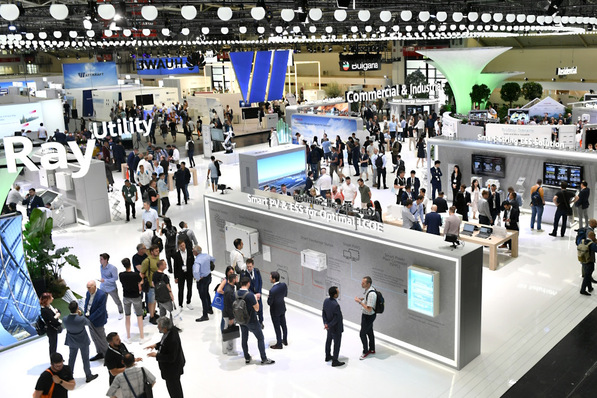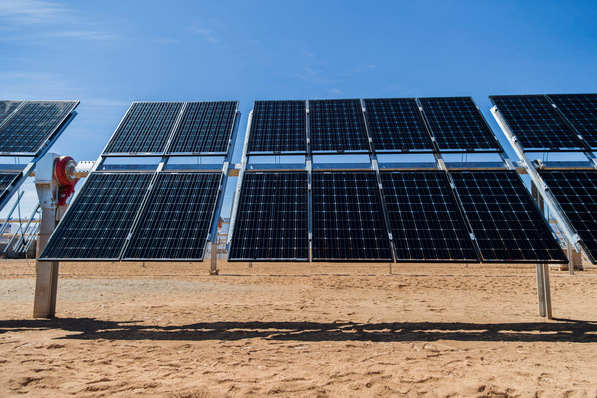Several factors contributed to this change. Stock levels for popular models in Europe have tightened, allowing those still holding inventory to raise prices slightly. Additionally, Chinese manufacturers increased prices by a few percent in December, driven by tax incentive adjustments affecting new production. Although these changes primarily impact newly manufactured modules, some distributors in Europe took advantage of the news to lift prices on existing stock.
Alongside these price adjustments, the market sentiment remained strong, with the PV PMI rising to 71, reflecting growing confidence among buyers and a more balanced supply-demand dynamic.
Also see: Expert analysis – Key challenges and opportunities for the European renewable energy market
The PV Purchasing Managers' Index (PMI) continues to be a vital tool for gauging market sentiment and demand patterns in the European solar sector. This indicator, based on purchasing intentions gathered from a sample of more than 900 users out of more than 22,700 registered on the sun.store platform, offers a comprehensive view of the industry's current state and anticipated trajectory. By capturing input from a diverse range of participants—including installers, distributors, and other stakeholders—the PV PMI provides detailed insights into evolving purchasing behaviors across Europe.
PV PMI: Confidence returns as buyers prepare for 2025
January’s PV PMI score of 71 marks a notable improvement from previous months, reflecting growing confidence among buyers and a potential shift in market dynamics. This is the highest PMI reading in recent months, indicating that businesses are beginning to look beyond short-term price drops and prepare for an active first quarter of 2025.
Survey results from 932 respondents highlight a clear increase in purchasing intentions:
● 54% of buyers plan to increase their purchases, suggesting stronger demand and strategic stockpiling for upcoming projects.
● 34% intend to maintain current order volumes, ensuring a stable baseline of market activity.
● Only 12% foresee a reduction in orders, signaling that downward pressures on demand may be easing.

sun.store
This rise in PMI can be attributed to several key factors:
Stabilizing prices & strategic procurement
After months of steady declines, module prices began to rebound in late January, leading to increased activity from buyers looking to secure inventory before further price adjustments. With stock tightening on popular models, many saw this as an opportunity to lock in competitive prices before potential further shifts.
Market adjustments in China & distributor reactions
China’s recent changes to tax incentives for solar manufacturers led to a slight price increase in newly produced modules, which, in turn, influenced distributor behavior in Europe. While these changes primarily affect new production, some European distributors raised prices on existing stock, further reinforcing the sense of a market-wide stabilization.
Planning for peak installation season
The beginning of the year is a critical time for procurement as businesses prepare for the spring and summer installation season. The increased PMI score suggests that buyers are moving early to secure stock, rather than waiting for further price drops that may no longer materialize at the same pace as in late 2024.
Premium technology driving demand
Another significant trend seen in January was the increased preference for high-efficiency modules. The rise in N-type panel prices—driven by a greater share of transactions in this segment—confirms that buyers are shifting from purely price-driven decisions to a stronger focus on performance and long-term value.
Expert commentary: What this means for the market
According to Filip Kierzkowski, Head of Partnerships and Trading at sun.store: "We are seeing a clear shift in buyer sentiment. The rising PMI score confirms that businesses are approaching 2025 with a more strategic mindset. The slowdown in price declines—combined with tightening stock on key models—has led to renewed purchasing activity. Many buyers recognize that waiting too long may not yield further price advantages, especially as we head into the busier installation season."
Also see the December 2024 PV Index
Victor Cantareli, Head of Key Accounts - Europe, adds: “January was a slow burner with industry players already sitting on stock prior to the winter break. The month ended on a high both on volume traded and with prices creeping a little higher than they have been. February will be the benchmark for Q1 2025, as we leave Chinease New Year behind we expect a lot more activity but one thing is certain the super low prices are not here to stay just yet!”
Outlook for the coming months
With PMI rising and demand shifting toward premium modules, the market appears to be entering a more balanced phase. While further price adjustments remain possible, the strong start to the year suggests that the market is stabilizing—a stark contrast to the persistent price erosion seen throughout much of 2024.
The coming months will be critical in determining whether this renewed confidence translates into sustained growth, but for now, the data suggests a market that is regaining its footing and preparing for an active 2025.
Module prices: Rebounding after months of decline
January saw price increases across all module categories, signalling the first broad uptick in months. The combination of tightening stock and strategic price adjustments from distributors has driven prices slightly upward.
Monofacial modules:
N-type: Prices increased to €0.102/Wp (+12%), reflecting a shift towards higher-efficiency modules. This rise was driven by a higher volume of transactions involving premium panels, as buyers prioritised performance over purely cost-driven decisions.
P-type: Prices climbed to €0.083/Wp (+8%), marking a notable reversal after the steady declines of late 2024. This increase suggests that the downward pressure on standard module prices may be easing as stock levels for lower-cost alternatives gradually tighten.

sun.store
Bifacial modules:
N-type: Prices edged up to €0.090/Wp (+2%), indicating continued demand for bifacial technology. The modest increase aligns with market trends favouring higher-efficiency solutions for large-scale projects.
P-type: Insufficient sample size to establish trends for this category.
Full black modules:
Prices rose slightly to €0.090/Wp (+2%), with limited stock availability contributing to the adjustment. As these panels remain a preferred choice for aesthetic and premium installations, sellers capitalised on demand by moderately increasing prices
This overall price shift marks a departure from the prolonged declines seen throughout 2024, suggesting that the market may be finding a new pricing balance as demand stabilises and strategic procurement decisions drive transactions.
Inverter pricing: Market split between hybrid and on-grid segment
While module prices rose, inverter pricing showed mixed trends:
Hybrid Inverters:
<15kW: Prices rose by 5% to €123.97/kW, driven by strong demand for smaller hybrid systems.
>15kW: Prices declined by 5%, settling at €89.47/kW. This drop suggests growing competition among suppliers, as well as a possible shift in purchasing patterns, with fewer bulk orders for larger hybrid systems.
On-grid Inverters
<15kW: Prices decreased slightly by 2% to €56.82/kW, indicating stable yet competitive market conditions. The downward adjustment may be linked to ongoing price pressure from manufacturers and wider availability of stock in this category.
>15kW: Prices increased marginally by 1%, reaching €25.68/kW. Despite a relatively stable demand for large-scale on-grid systems, this slight price uptick suggests that the segment remains resilient, with some distributors adjusting prices based on availability and market positioning

sun.store
Brand preferences: Jinko and Solis dominate
January’s market data, highlighted consistent brand preferences, with Jinko Solar emerging as the top choice for solar modules, reflecting its strong reputation for reliability and performance. In the inverter segment, Solis remained the preferred brand for systems under 15kW, maintaining its dominance in the residential and small commercial markets. Meanwhile, Sungrow led the >15kW category, reinforcing its position as a go-to brand for larger installations. These preferences indicate buyers continue to prioritise proven brands with strong performance records, even as pricing dynamics evolve.
Looking ahead: A more balanced market in early 2025?
With prices rebounding and buyer confidence strengthening, the market is entering a new phase of stabilisation. While it’s too early to call a full trend reversal, the slowing pace of price declines and renewed demand for premium products suggest a more balanced dynamic between supply and demand.
Also see: Next investor newsletter – Funding solar projects with ELTIF and PPA
With distributors adjusting pricing strategies and supply constraints emerging on key models, the next few months will be crucial in shaping 2025’s trajectory. One thing is clear—buyers are acting more confidently, and the European solar market is starting the year on a stronger footing.
About – pv.index & The PV Purchasing Managers' Index (PV PMI)
pv.index traces current trading prices for solar components on a monthly basis. Data is recorded on sun.store, the biggest online PV trading platform with 7.8 GW+ of components on offer. Trading prices are weighted by the power of components involved in the transactions to arrive at a reliable estimate for the whole market.
The PV Purchasing Managers' Index (PV PMI) indicates the overall sentiment towards the demand in the PV industry. PV PMI shows whether demand is expected to expand (above 50), remain stable, or contract (below 50), as perceived by purchasing managers.
The PV PMI was calculated as: PMI = (P1 * 1) + (P2 * 0.5) + (P3 * 0), where: P1 = percentage of answers reporting an improvement, P2 = percentage of answers reporting no change, P3 = percentage of answers reporting a deterioration. Survey is based on a sample of 900+ sun.store buyers. (hcn)








